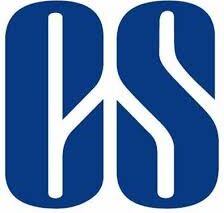Differences Between Skill Assessment Software and Energy Assessment Software
Skill Assessment Software and Energy Assessment Software serve unique purposes in different sectors. Understanding their differences can help businesses and individuals choose the right tool for their needs.
Assessment tools have become indispensable across various industries in today’s digital age. Two prominent types of assessment software are Skill Assessment Software and Energy Assessment Software. Though they share a common goal of evaluation, their applications, functionalities, and target audiences are vastly different. This article explores these differences in detail to provide a clear understanding of each.
Table of Contents
What is Skill Assessment Software?
Skill Assessment Software is designed to evaluate the abilities, competencies, and knowledge of individuals. It is commonly used in recruitment, employee development, and educational environments. These tools help identify skill gaps, assess learning outcomes, and support strategic HR decisions.
What is Energy Assessment Software?
Energy Assessment Software focuses on evaluating energy consumption and efficiency in buildings, machinery, and processes. It is primarily used in industries related to manufacturing, construction, and environmental management. This software helps organizations reduce energy costs, improve sustainability, and comply with regulations.

Skill Assessment Software
Skill Assessment Software
Table-Wise Differences
| Aspect | Skill Assessment Software | Energy Assessment Software |
|---|---|---|
| Purpose | Evaluates individual skills and competencies | Assesses energy consumption and efficiency |
| Primary Users | HR departments, educational institutions, training providers | Energy managers, facility managers, sustainability teams |
| Key Features | Tests, quizzes, simulations, analytical reports | Energy audits, consumption tracking, efficiency analysis |
| Applications | Recruitment, employee development, education | Energy saving, regulatory compliance, sustainability |
| Benefits | Identifies skill gaps, aids in talent management | Reduces energy costs, improves environmental performance |
| Data Utilized | Performance metrics, test scores, competency frameworks | Energy usage data, consumption patterns, cost analysis |
| Outcome | Improved hiring decisions, enhanced training programs | Optimized energy use, reduced operational costs |
Point-Wise Differences
- Purpose and Objectives
- Skill Assessment Software: Aims to evaluate and enhance individual skills and competencies.
- Energy Assessment Software: Focuses on analyzing and improving energy consumption and efficiency.
- Target Audience
- Skill Assessment Software: Used by HR professionals, educators, and training organizations.
- Energy Assessment Software: Utilized by energy managers, facility operators, and environmental consultants.
- Core Features
- Skill Assessment Software: Includes tests, quizzes, simulations, and detailed analytical reports.
- Energy Assessment Software: Features energy audits, real-time consumption tracking, and efficiency analysis tools.
- Applications
- Skill Assessment Software: Essential in recruitment, employee performance evaluations, and educational assessments.
- Energy Assessment Software: Critical for energy saving initiatives, compliance with environmental regulations, and sustainability projects.
- Benefits
- Skill Assessment Software: Helps identify skill gaps, supports strategic hiring, and enhances training effectiveness.
- Energy Assessment Software: Aids in reducing energy costs, improves operational efficiency, and supports sustainability goals.
- Data Utilization
- Skill Assessment Software: Uses performance metrics, test scores, and competency frameworks to assess and improve skills.
- Energy Assessment Software: Relies on energy usage data, consumption patterns, and cost analysis to optimize energy use.
- Outcome
- Skill Assessment Software: Leads to better hiring decisions, effective training programs, and improved employee performance.
- Energy Assessment Software: Results in optimized energy consumption, reduced operational costs, and enhanced environmental performance.
Similarities Between Skill Assessment Software and Energy Assessment Software
While Skill Assessment Software and Energy Assessment Software serve different primary purposes, they share several similarities in their structure, functionality, and impact. Understanding these commonalities can provide a comprehensive view of how these tools contribute to efficiency and improvement in their respective fields.
Shared Objectives
Both types of software aim to evaluate and improve performance. Skill Assessment Software focuses on individual or team skills and competencies, while Energy Assessment Software targets energy consumption and efficiency. Despite their different areas of focus, the ultimate goal is to enhance overall effectiveness and productivity.
Data-Driven Insights
A key similarity between the two is their reliance on data to provide insights and drive decisions. Both software types collect, analyze, and interpret data to deliver actionable insights.
- Skill Assessment Software gathers data on individual performance, test scores, and competency metrics to highlight areas for improvement.
- Energy Assessment Software collects data on energy usage, consumption patterns, and efficiency metrics to identify energy-saving opportunities.
Reporting and Analytics
Both Skill Assessment Software and Energy Assessment Software offer robust reporting and analytics features. These tools generate detailed reports that help users understand current performance levels and identify improvement areas.
- Skill Assessment Software produces reports that include test results, skill gap analyses, and recommendations for training or development.
- Energy Assessment Software generates reports on energy consumption, efficiency analysis, and potential cost savings.
Customization and Flexibility
Another similarity is the customization and flexibility offered by both types of software. They can be tailored to meet the specific needs of different organizations and industries.
- Skill Assessment Software can be customized to evaluate various skills and competencies relevant to specific roles or industries.
- Energy Assessment Software can be adjusted to monitor and assess different types of energy systems and consumption patterns.
User-Friendly Interfaces
Both software types typically feature user-friendly interfaces designed to facilitate ease of use. This makes it accessible for users with varying levels of technical expertise.
- Skill Assessment Software offers intuitive dashboards and easy-to-navigate modules for creating and managing assessments.
- Energy Assessment Software provides clear visualizations and straightforward navigation to help users monitor and analyze energy data.
Automation and Efficiency
Automation is a critical component of both Skill Assessment Software and Energy Assessment Software. They streamline processes that would otherwise be time-consuming and prone to errors if done manually.
- Skill Assessment Software automates the creation, distribution, and scoring of assessments, saving time for HR professionals and educators.
- Energy Assessment Software automates the collection and analysis of energy data, providing real-time insights and reducing the need for manual audits.
Integration Capabilities
Both types of software often come with integration capabilities, allowing them to work seamlessly with other systems and tools used by organizations.
- Skill Assessment Software can integrate with learning management systems (LMS), human resource management systems (HRMS), and other educational tools.
- Energy Assessment Software can connect with building management systems (BMS), energy management systems (EMS), and other monitoring tools.
Supporting Strategic Decisions
Both Skill Assessment Software and Energy Assessment Software support strategic decision-making. By providing critical insights and data, they help organizations make informed decisions that align with their strategic goals.
- Skill Assessment Software aids in making decisions related to hiring, training, and employee development.
- Energy Assessment Software helps in formulating strategies for energy conservation, cost reduction, and sustainability initiatives.
Enhancing Organizational Performance
Ultimately, both software types contribute to enhancing organizational performance. Whether through improving employee skills or optimizing energy usage, they play a significant role in driving efficiency and effectiveness.
- Skill Assessment Software enhances workforce capabilities, leading to better performance and productivity.
- Energy Assessment Software improves energy efficiency, leading to cost savings and reduced environmental impact.
Challenges Faced by Skill Assessment Software and Energy Assessment Software at Different Levels
Both Skill Assessment Software and Energy Assessment Software provide significant benefits to organizations. However, they also face several challenges at various levels. Understanding these challenges can help organizations better prepare and address potential issues effectively.

Skill Assessment Software
Challenges Faced by Skill Assessment Software
1. Technical Challenges
- Integration with Existing Systems: Integrating Skill Assessment Software with existing HR management systems, learning management systems, and other educational tools can be complex and time-consuming.
- Data Security and Privacy: Ensuring the security and privacy of sensitive data, such as employee performance and test results, is a critical challenge. Data breaches can have severe consequences.
- Software Reliability: Maintaining the reliability and uptime of the software is essential to ensure consistent access and usability. Technical glitches can disrupt assessment processes.
2. User Adoption and Training
- Resistance to Change: Employees and educators may resist adopting new technologies, preferring traditional methods. This resistance can hinder the effective implementation of the software.
- Training Requirements: Comprehensive training is needed to ensure that users can effectively navigate and utilize the software’s features. Insufficient training can lead to underutilization.
3. Content and Assessment Quality
- Creating Relevant Content: Developing relevant and accurate assessment content that aligns with organizational goals and industry standards can be challenging.
- Bias and Fairness: Ensuring that assessments are unbiased and fair to all participants is crucial. Any perceived or actual bias can undermine the credibility of the assessment process.
4. Scalability and Customization
- Scalability Issues: As organizations grow, scaling the software to accommodate more users and data can become challenging. The software must be able to handle increased loads without performance degradation.
- Customization Needs: Different organizations have unique needs, requiring significant customization of the software. Balancing customization with maintaining a standard software version can be difficult.
Challenges Faced by Energy Assessment Software
1. Technical Challenges
- Data Integration and Compatibility: Integrating energy assessment software with various building management systems, sensors, and other energy monitoring tools can be technically complex.
- Real-Time Data Processing: Processing large volumes of real-time data from multiple sources efficiently is a significant challenge. Delays or inaccuracies can affect the reliability of insights.
- Software Reliability and Uptime: Ensuring the software operates reliably and is available at all times is crucial for continuous energy monitoring and assessment.
2. User Adoption and Training
- Technical Expertise Requirements: Users often need a certain level of technical expertise to effectively use energy assessment software. Training staff to understand and utilize the software’s capabilities can be resource-intensive.
- Resistance to Technological Change: Similar to skill assessment software, there can be resistance to adopting new energy management technologies, particularly in organizations with established practices.
3. Data Quality and Accuracy
- Data Quality Issues: The accuracy of assessments depends heavily on the quality of data collected. Inaccurate or incomplete data can lead to misleading insights and ineffective energy management strategies.
- Ensuring Comprehensive Data Coverage: Collecting comprehensive data from all relevant sources, including hard-to-reach areas or legacy systems, can be difficult.
4. Cost and ROI
- Initial Investment Costs: The initial cost of purchasing and implementing energy assessment software can be high, making it a significant investment for many organizations.
- Demonstrating ROI: Proving the return on investment (ROI) can be challenging, especially in the short term. Organizations need to see tangible benefits to justify the cost.
Common Challenges Faced by Both Types of Software
1. Implementation and Maintenance
- Implementation Complexity: The implementation process for both types of software can be complex, requiring careful planning and coordination. Mistakes during implementation can lead to long-term issues.
- Ongoing Maintenance: Regular maintenance and updates are necessary to ensure the software remains effective and secure. This requires dedicated resources and attention.
2. Compliance and Regulatory Challenges
- Regulatory Compliance: Both types of software must comply with relevant regulations and standards, which can vary by industry and region. Keeping up with these requirements can be challenging.
- Data Protection Laws: Adhering to data protection laws, such as GDPR or CCPA, is critical to avoid legal penalties and maintain user trust.
3. Achieving User Engagement
- Encouraging Consistent Use: Ensuring that users consistently engage with the software and utilize its features to their full potential can be difficult. Continuous engagement is necessary for maximizing the benefits of the software.
4. Measuring Effectiveness
- Tracking Outcomes: Measuring the effectiveness of the software in achieving its intended goals, whether it be improving skills or reducing energy consumption, requires robust tracking and analysis mechanisms.
Conclusion
Both Skill Assessment Software and Energy Assessment Software play crucial roles in their respective domains. Understanding their differences is key to leveraging their strengths effectively. While Skill Assessment Software is pivotal in human resource and educational settings, Energy Assessment Software is indispensable for managing energy efficiency and sustainability.
Selecting the right assessment tool depends on your specific needs and objectives. Whether you aim to enhance workforce skills or optimize energy usage, these technologies offer powerful solutions to drive improvement and achieve your goals.
By recognizing the distinct features and benefits of each type of software, organizations can make informed decisions to support their growth and sustainability initiatives.

